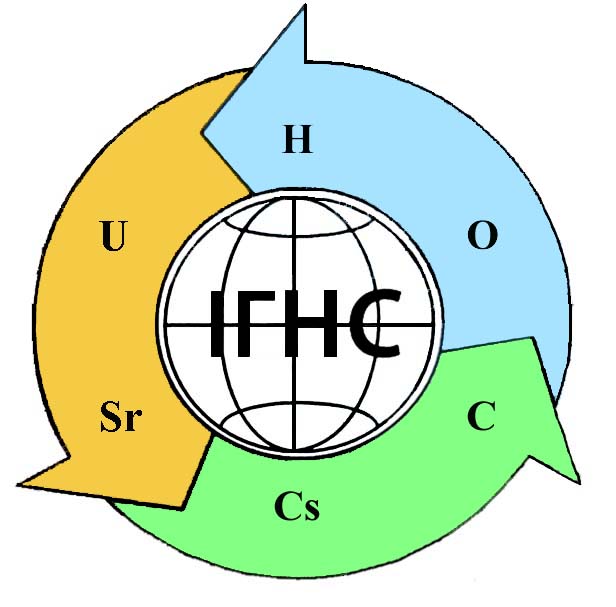ABOUT THE CONGRUENCE OF FORMATION OF PIVNICHNO-ТЕRSYAN FOLDING FORM AND CONTAINING FORMATIONS (ОRIKHOVО-PAVLOGRAD SUTURE ZONE)
DOI:
https://doi.org/10.32782/geotech2022.35.16Keywords:
dislocation structures of Orikhovo-Pavlograd suture zone, Pivnichno-Tersyan folded formAbstract
The purpose of the work is to clarify the structural control of ores. A comprehensive approach to studying the parameters of ore- bearing Precambrian structures of the Ukrainian Shield (USh) was applied. For the leading petrotypes of the northern part of the Orikhovo-Pavlograd suture zone of the USh, dislocation structures of several generations, which differ from each other in spatial distribution and P-T values of material content, have been identified. The structures of the first five generations are formed by mineral paragenesis from granulite to green-shale facies metamorphism; their age is tied to the time range of 3.6-1.8 billion years. Later dislocation structures are postmetamorphic. At the micro-meso levels of the organization, the selected structures are represented by banding, schistosity, linearity, cleavage, cracks, etc.; at the macro level – viscous and brittle faults. That is, structural-material transformations in the volumes of the studied rocks species took place cooperatively/simultaneously, in several stages in significantly shear tectonic conditions, against the background of regressive change of P-T parameters of the environment. Data on the structural-material organization of U-, Th-containing Pivnichno-Tersyan folded form according to the principle of hierarchy of geological structures are systematized. It is shown that this U-, Th-perspective object is a highly ordered sub-shear structure. That is, its formation was provoked by Paleoproterozoic shear displacements and occurred synchronously with the formation of relevant geological bodies by supporting the existing Precambrian formations with the creation of new structural-material paragenesis. An idealized model of formation of a single U-, Th- perspective structure has been created, which can be used in further research.
References
Аzarov, N.Ya., Аnciferov, А.V., Sheremet, Е.М., Glevassky, E.B. (2005), Geological-geoelectric model of the Orekhovo-Pavlograd suture zone of the Ukrainian shield. Kyiv: Naukova dumka [in Russian].
Gintov, O.B. (2005), Field tectonophysics and its application in the study of deformations of the earth's crust of Ukraine. Kyiv: Fenix [in Russian].
Gordienko, V.V., Gordienko, I.V., Zavgorodnyaya, O.V. (2005), Ukrainian shield (Geophysics, deep processes). Kyiv: KORVIN PRESS [in Russian].
Gursky, D.S., Yesipchuk, K.Yu., Kalinin, V.I. (2006), Metallic minerals of Ukraine. Kyiv-Lviv: Center Europe [in Ukrainian].
Kruglov, S.S., Arsiriy, Yu.O., Velikanov, V.Ya. (2007), Tectonic map of Ukraine. Scale 1 : 1 000 000. Kyiv: Min. Environmental Protection of Ukraine. State Geological Survey, UkrDGRI [in Ukrainian].
Lobach-Zhuchenko, S.B., Egorova, Yu.S., Yurchenko, A.V. (2009), Biochite-garnet gneisses – the result of structural and metamorphic processing of ancient tonalites: mineral composition, characteristics and age of the process (Vasilkovsky section of the Orekhovo-Pavlograd suture zone), Mineral. Journ., 1: 3–10 [in Russian].
Osmachko, L.S. (2020), Geodynamic conditions of formation of Precambrian structure and separate ore-perspective objects of the Ukrainian shield. Dis. Dr. geol. Science: 04.00.01. Kyiv [in Ukrainian].
Semenenko, N.H., Ladieva, V.D., Bordunov, I.N., Boyko, V.L., Kutin, V.V., Strueva, O.M., Ryabokon, S.M., Polovko, N.I. (1978), Iron-siliceous formations of the Ukrainian Shield. Kyiv: Naukova dumka [in Russian].
Shcherbak, N.P., Artemenko, G.V., Lesnaya, I.M., Ponomarenko, A.N. (2005), Geochronology of the early Precambrian Ukrainian Shield (archaea). Kyiv: Naukova dumka [in Russian].
Yesypchuk, K.Yu., Bоbrov, O.B, Stepanyuk, L.M. (2004), Correlation chronostratigraphic scheme of the early Precambrian of the Ukrainian Shield. Kyiv: UkrDGRI [in Ukrainian].









